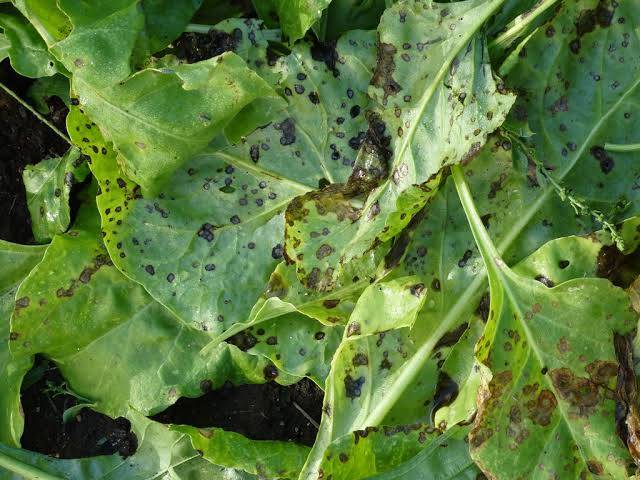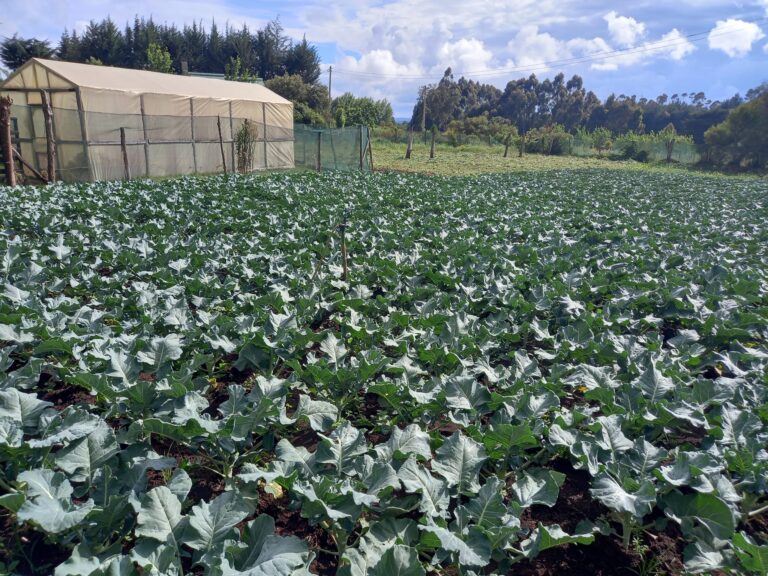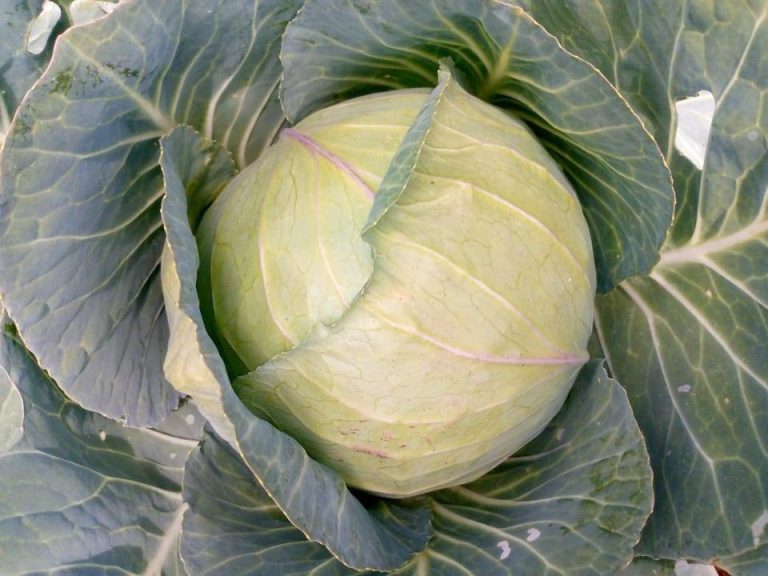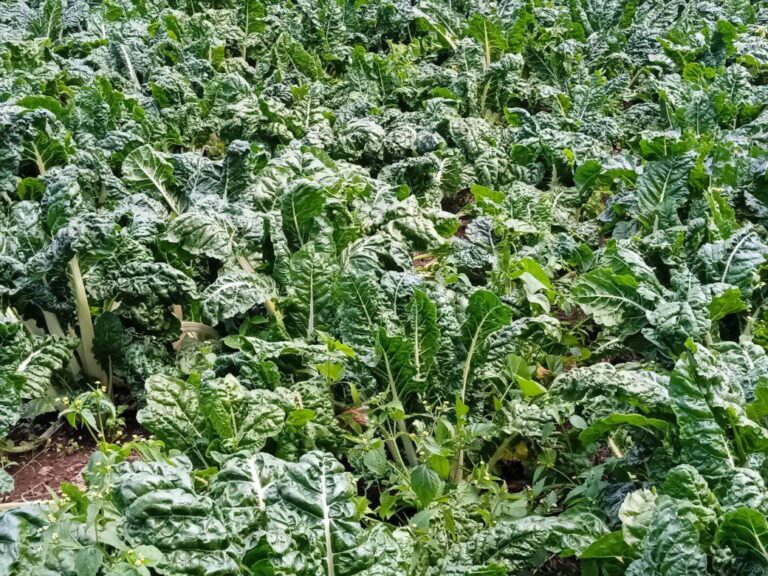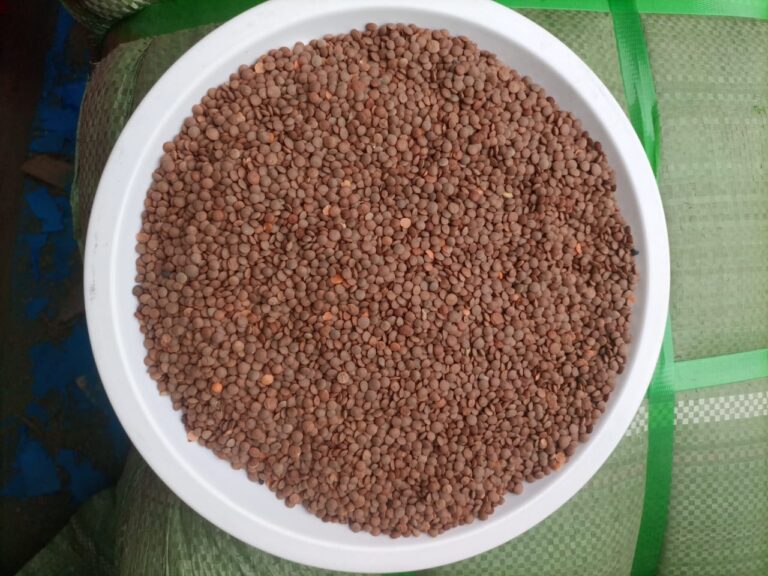Diseases That Cause Black Spots in Spinach and Their Control
Black spots on spinach leaves are primarily caused by fungal and bacterial diseases such as downy mildew, anthracnose, and bacterial leaf spot. Control measures include crop rotation, proper irrigation, fungicide application, using resistant varieties, and maintaining good sanitation practices.
Early detection and a combination of cultural, chemical, and biological methods are crucial for effective management.
Black spots on spinach leaves can indicate various diseases, impacting crop quality and yield. This guide explores common culprits like downy mildew, anthracnose, and bacterial leaf spot, offering effective control measures for gardeners and commercial growers.
Key Takeaways:
- Major diseases: Downy mildew, anthracnose, leaf spot, Fusarium wilt, bacterial leaf spot
- Control strategies: Crop rotation, proper irrigation, fungicide use, resistant varieties
- Prevention: Sanitation, spacing, seed treatment, monitoring
Diseases That Cause Black Spots in Spinach and Their Control
Understanding these diseases and implementing effective control measures is crucial for gardeners and commercial growers alike.
Downy Mildew (Peronospora farinosa)
Downy mildew is a prevalent fungal disease that manifests as angular, dark brown to black spots on spinach leaves. This disease thrives in humid conditions and can significantly impact spinach crops if not managed promptly.
The distinctive grayish-purple fuzz on the underside of the leaves is a tell-tale sign of downy mildew.
Control Measures:
- Crop Rotation: Regularly rotate spinach with non-host crops to break the lifecycle of the pathogen.
- Water Management: Implement drip irrigation instead of overhead watering to keep foliage dry.
- Fungicide Use: Apply fungicides preventively or at the first sign of disease, adhering to recommended guidelines.
Anthracnose (Colletotrichum spp.)
Anthracnose, caused by several species of Colletotrichum fungi, leads to dark, sunken lesions with black margins on spinach leaves. This disease can rapidly spread, particularly in warm, wet conditions, and can cause extensive damage if not controlled.
Control Measures:
- Pathogen-Free Seeds: Use certified disease-free seeds to prevent initial infection.
- Sanitation: Remove and destroy infected plant debris to reduce inoculum sources.
- Fungicide Application: Use fungicides appropriate for anthracnose, following label directions.
Leaf Spot (Alternaria spp.)
Alternaria leaf spot appears as small, dark brown to black circular spots with concentric rings. This fungal disease favors warm, humid conditions and can be quite destructive, leading to reduced photosynthesis and plant vigor.
Control Measures:
- Proper Spacing: Plant spinach with adequate spacing to enhance air circulation and reduce humidity.
- Mulching: Apply mulch to minimize soil splashing onto leaves, which can spread spores.
- Timely Fungicide Use: Apply fungicides when environmental conditions favor disease development.
Fusarium Wilt (Fusarium oxysporum)
Fusarium wilt primarily affects the roots and stems, but severe infections can cause dark discoloration and spots on spinach leaves. This soil-borne pathogen is particularly challenging because it can persist in the soil for years.
Control Measures:
- Resistant Varieties: Plant spinach varieties that are resistant to Fusarium wilt.
- Soil Management: Improve soil drainage and avoid overwatering to reduce pathogen survival.
- Biocontrol Agents: Use beneficial soil microorganisms that antagonize Fusarium species.
Bacterial Leaf Spot (Pseudomonas syringae)
This bacterial disease causes dark, water-soaked spots with yellow halos on spinach leaves, which can turn black as the disease progresses. Bacterial leaf spot spreads rapidly in wet conditions and can be challenging to control.
Control Measures:
- Sanitation Practices: Clean tools and equipment to prevent the spread of bacteria.
- Copper-Based Sprays: Apply copper-based bactericides to manage bacterial infections.
- Avoid Overhead Irrigation: Use ground-level watering techniques to keep foliage dry.
Edema
Edema is a non-infectious disorder caused by excessive moisture uptake, resulting in small, blackened spots on spinach leaves. This physiological issue is often confused with disease symptoms but requires different management strategies.
Control Measures:
- Watering Practices: Adjust watering schedules to avoid waterlogging and reduce humidity around plants.
- Environmental Control: Maintain optimal greenhouse conditions if growing indoors, ensuring proper ventilation and humidity levels.
Effective Control and Management Strategies
Implementing a combination of cultural, chemical, and biological control methods can significantly reduce the incidence and severity of diseases causing black spots in spinach.
Crop Rotation
Regularly rotating crops with non-host plants is one of the most effective strategies to prevent the buildup of pathogens in the soil. This breaks the life cycle of many soil-borne diseases, reducing their impact on subsequent spinach crops.
Seed Treatment
Using pathogen-free seeds and treating seeds with appropriate fungicides or hot water treatments can minimize the risk of introducing diseases into the garden or field. Ensuring the initial plant material is healthy is a critical first step in disease prevention.
Spacing and Air Circulation
Proper spacing of spinach plants enhances air circulation, reducing the humidity levels around the foliage and making the environment less conducive to fungal and bacterial growth. This simple cultural practice can greatly diminish the incidence of leaf spot diseases.
Water Management
Avoiding overhead irrigation helps keep the leaves dry, which is crucial in managing diseases like downy mildew and bacterial leaf spot. Drip irrigation or soaker hoses deliver water directly to the soil, minimizing leaf wetness and reducing disease spread.
Fungicide Application
Timely application of fungicides can prevent the establishment and spread of many fungal diseases. It is essential to follow label instructions and apply fungicides at the correct intervals and dosages to ensure effectiveness and prevent resistance development.
Resistant Varieties
Planting disease-resistant spinach varieties provides a genetic barrier against specific pathogens. This is one of the most sustainable disease management strategies, as it reduces the need for chemical interventions and supports healthier plant growth.
Monitoring and Early Detection
Regularly inspecting spinach plants for early signs of disease allows for prompt intervention, which can prevent the spread and minimize damage. Implementing a routine scouting program helps in identifying issues before they become severe.
Conclusion
Managing diseases that cause black spots in spinach requires a comprehensive approach combining cultural practices, chemical treatments, and resistant varieties. By understanding the specific diseases and their control measures, growers can maintain healthy spinach crops, ensuring both high yield and quality.
Implementing these strategies will not only address current disease issues but also build a robust defense against future problems, fostering a sustainable and productive spinach cultivation system.
Frequently Asked Questions
What causes black spots on spinach leaves?
Black spots on spinach leaves are primarily caused by fungal diseases like downy mildew, anthracnose, and leaf spot, as well as bacterial infections and physiological disorders such as edema.
How can I prevent black spots on my spinach?
Preventing black spots involves using disease-free seeds, practicing crop rotation, ensuring proper plant spacing, managing irrigation to avoid leaf wetness, and applying fungicides as needed.
Can I eat spinach with black spots?
While spinach with black spots caused by certain diseases may not be harmful if thoroughly washed and cooked, it is best to remove and discard infected leaves to avoid spreading pathogens and to consume healthy, unblemished produce.
What fungicides are effective against spinach diseases?
Fungicides containing active ingredients like copper, mancozeb, or chlorothalonil are effective against many spinach diseases. Always follow label instructions and guidelines for safe and effective use.
How does crop rotation help in disease management?
Crop rotation helps break the lifecycle of soil-borne pathogens by depriving them of their host plants, thereby reducing their population in the soil and minimizing disease incidence in future crops.
What are the signs of downy mildew on spinach?
Signs of downy mildew include angular, dark brown to black spots on the upper leaf surface, often accompanied by a grayish-purple fuzz on the underside of the leaves, especially in humid conditions.
